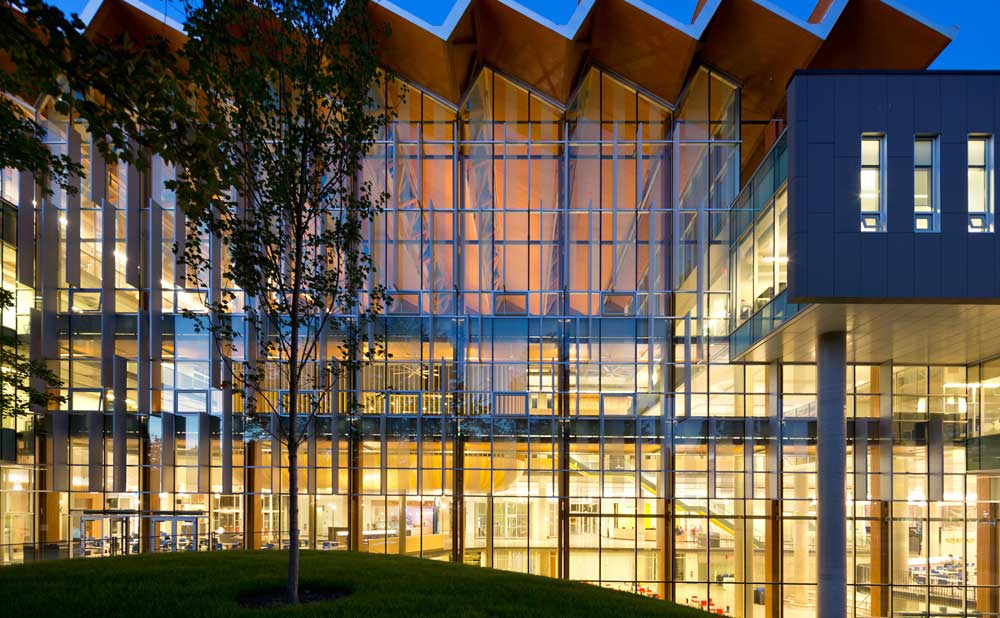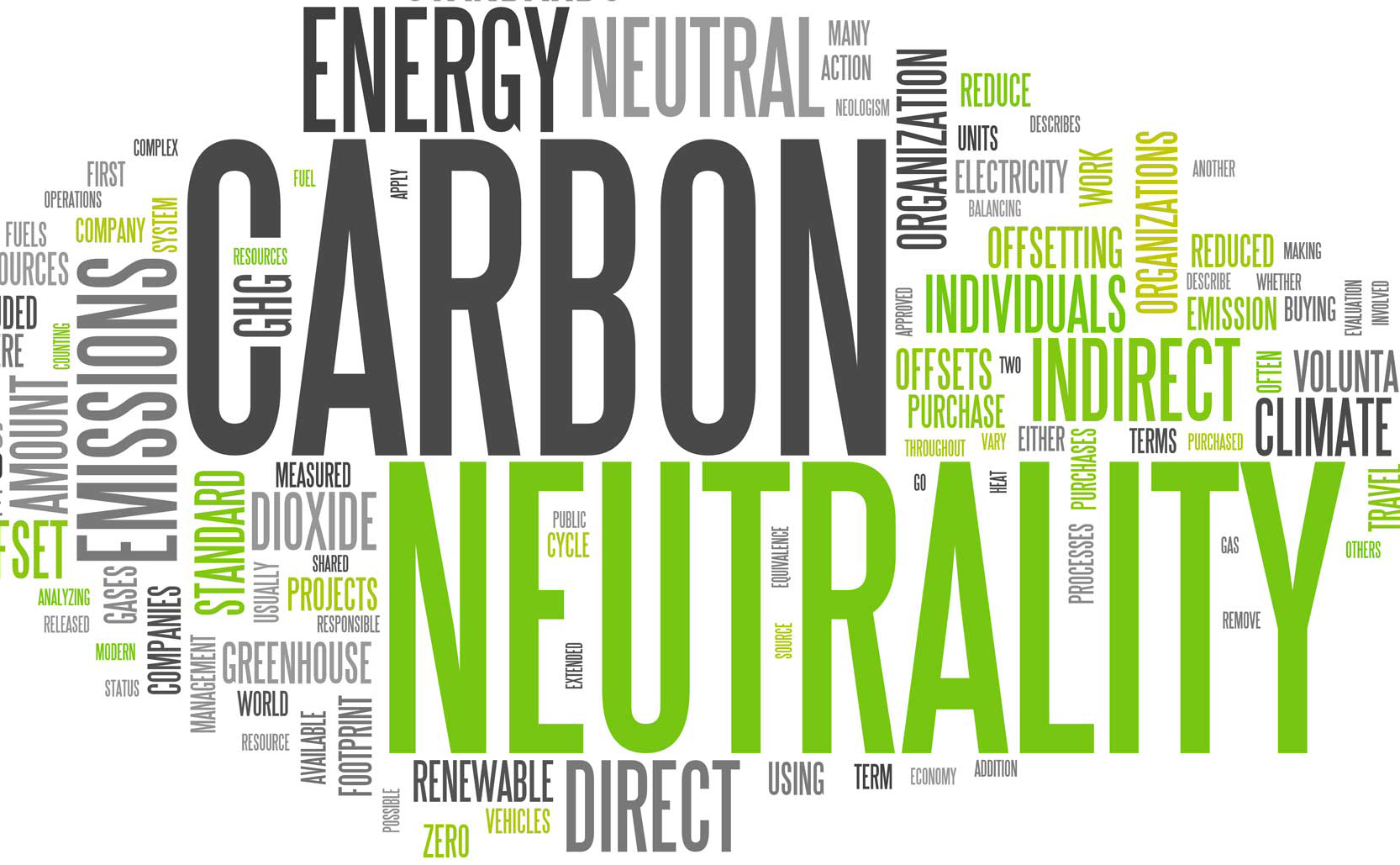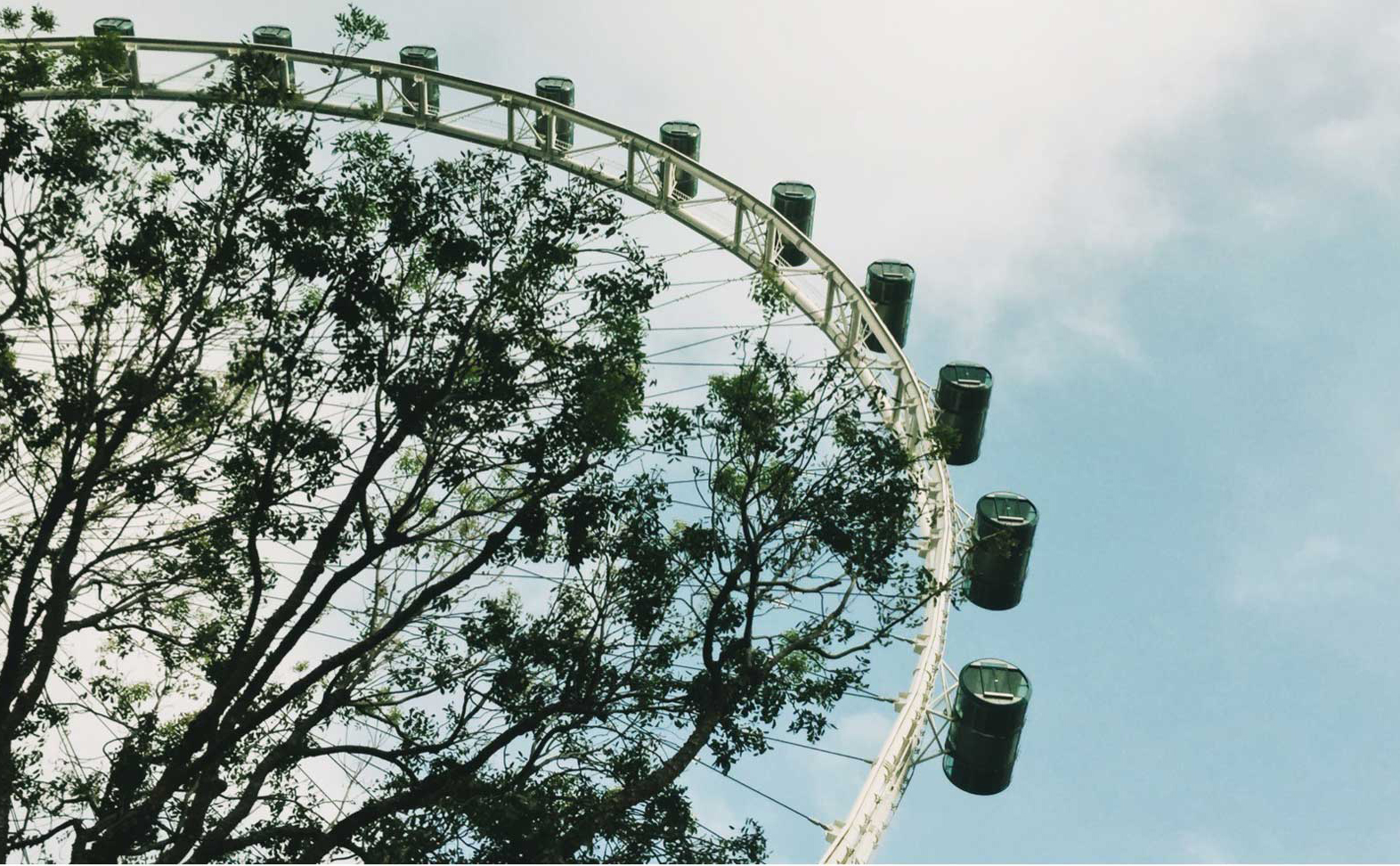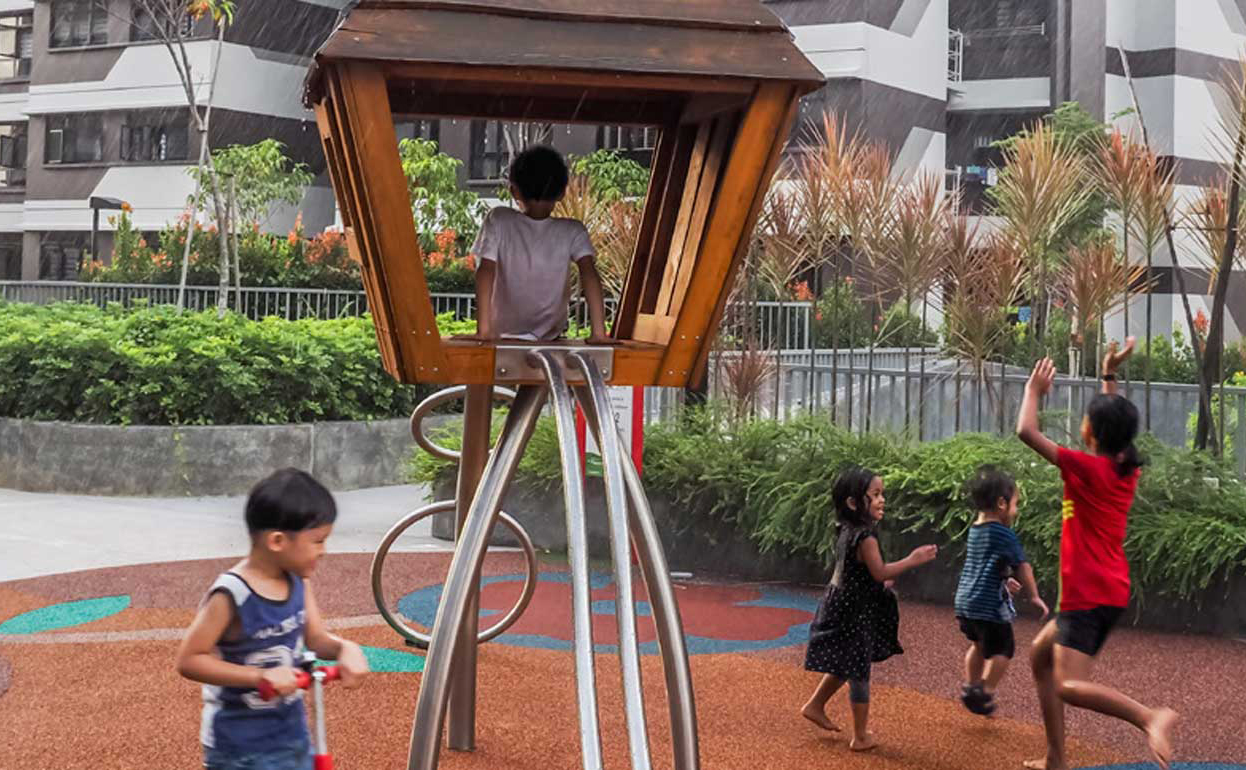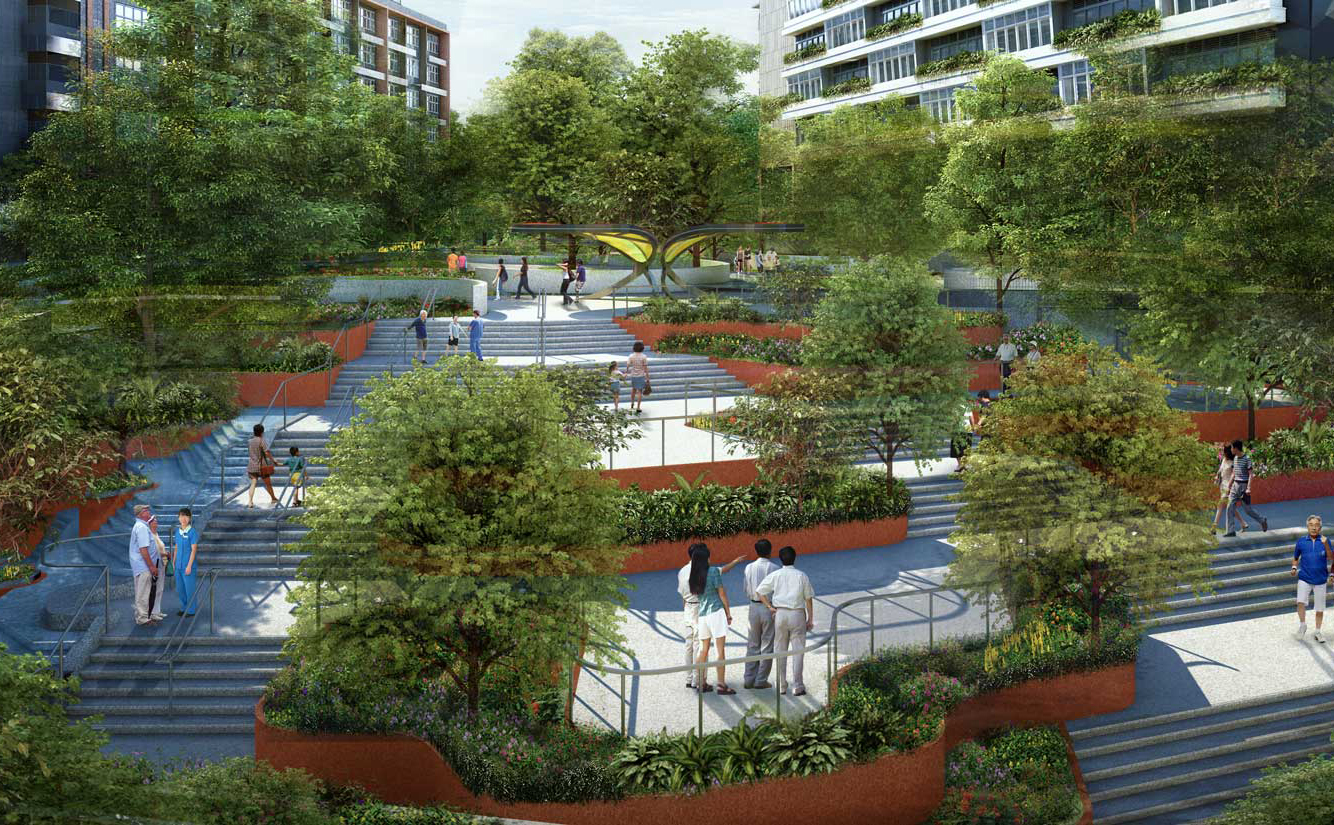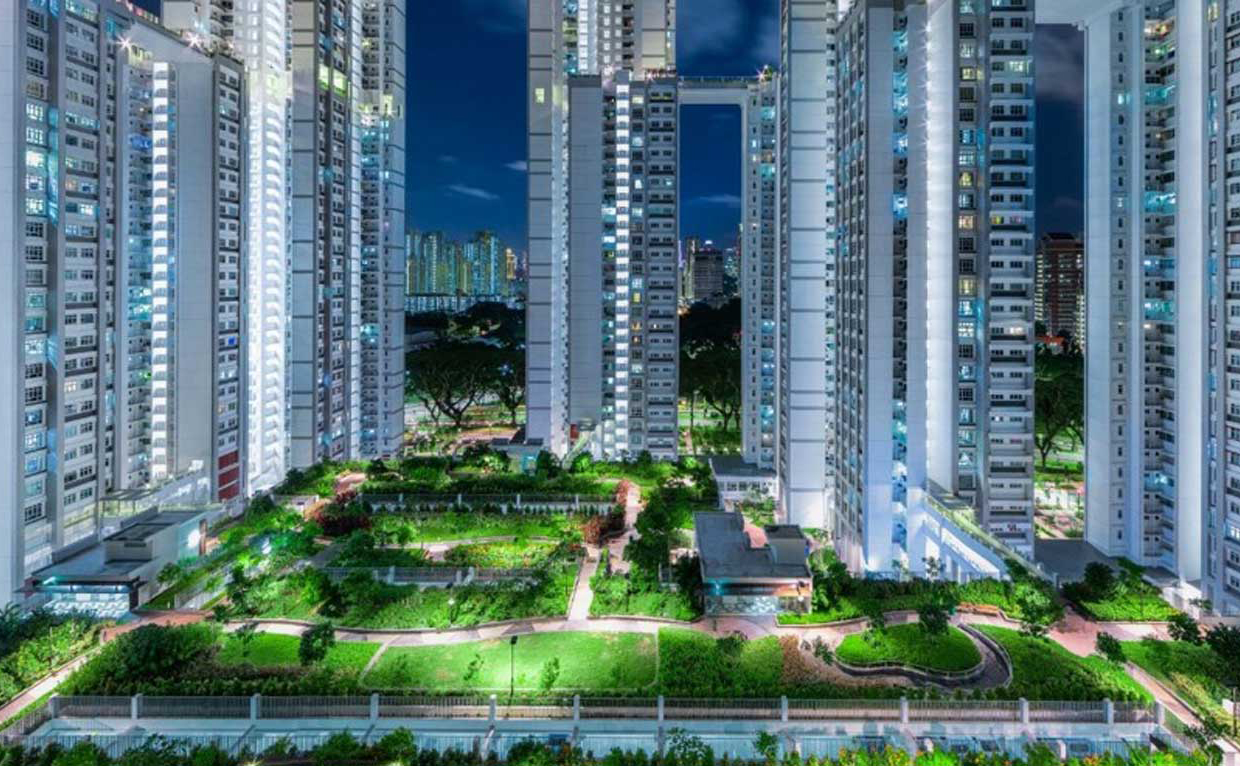Dialogue: THE SILVER LINING
IN A CRISIS
HAVING LIVED THROUGH COVID-19, YOUNG ARCHITECTS AND DESIGNERS DISCUSS HOW IT HAS SHAPED THEIR VIEWS OF SUSTAINABILITY
Since a series of lockdowns triggered by the ongoing pandemic, Singaporeans are more appreciative of green spaces now. There is great support for Singapore’s transformative vision as a ‘City in Nature’, where nature seeks to be restored into the built environment. A resonant image is captured here by Kenny Chen at the Singapore Flyer near Marina Bay
Abstract: Covid-19 has brought about massive changes in human behaviour and our interaction with the built environment. What opportunities are there for our architects to uplift user wellbeing in our designs?

Kenny Chen Han Teng
Executive Architectural Associate
SJ architecture
Singapore
Executive Architectural Associate
SJ architecture
Singapore
Sustainability has become a significant buzzword over the past decade. What exactly are we ‘sustaining’ in sustainable design?

Kenny Chen Han Teng
Executive Architectural Associate
SJ architecture
Singapore
Executive Architectural Associate
SJ architecture
Singapore
Sustainability has become a significant buzzword over the past decade. What exactly are we ‘sustaining’ in sustainable design?
When we talk about sustainability in sustainable design, I feel that we are talking about design that addresses the potentially destructive consequences of growth and development. In doing so we may upkeep a present standard of living and continue to fulfil our ambitions in a way that does not ultimately end up hurting our civilisation.
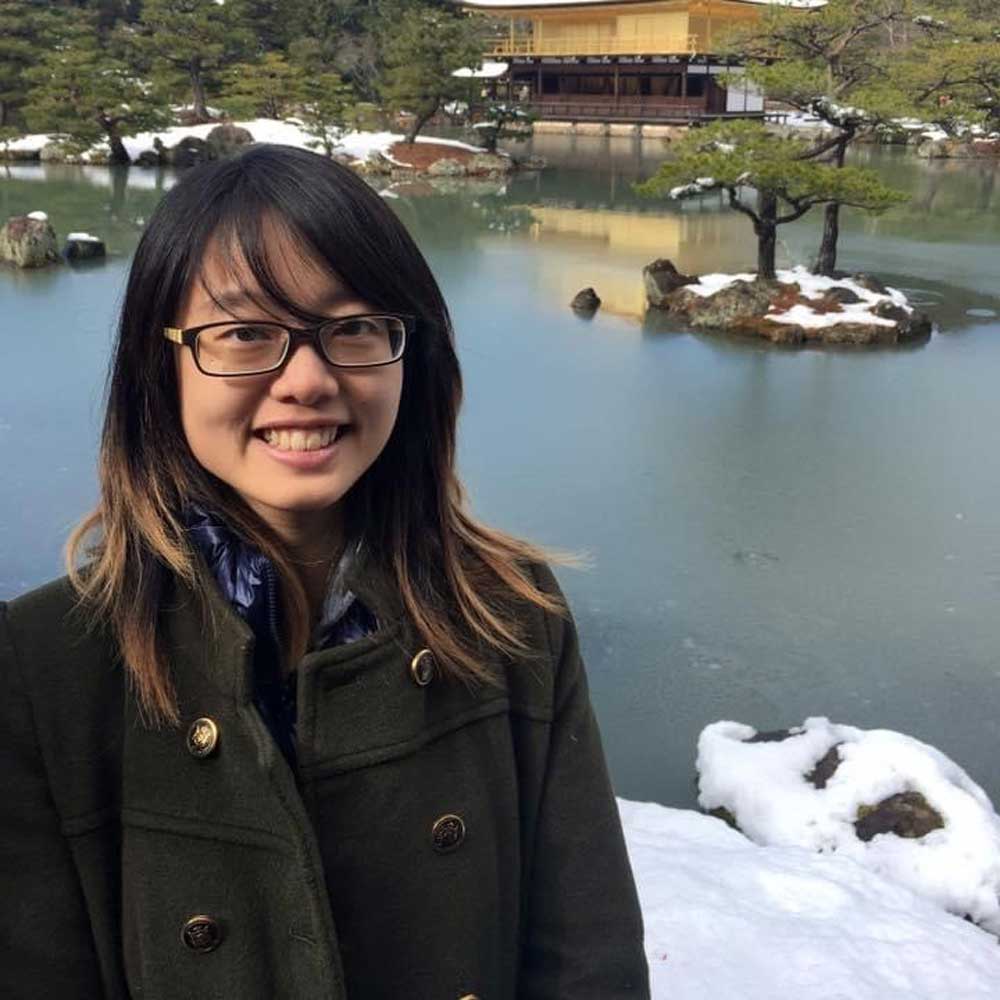
Anissa Tan Hui Ping
Senior Architectural Executive
SAA Architects
Singapore
Senior Architectural Executive
SAA Architects
Singapore
When we talk about sustainability in sustainable design, I feel that we are talking about design that addresses the potentially destructive consequences of growth and development. In doing so we may upkeep a present standard of living and continue to fulfil our ambitions in a way that does not ultimately end up hurting our civilisation.

Anissa Tan Hui Ping
Senior Architectural Executive
SAA Architects
Singapore
Senior Architectural Executive
SAA Architects
Singapore

Gu Liyuan
Senior Executive Landscape Architect
SJ architecture (Landscape)
Singapore
Senior Executive Landscape Architect
SJ architecture (Landscape)
Singapore
For landscape architects, sustaining the ecosystem is the ultimate goal for a sustainable landscape design. To achieve that, we build ecological infrastructure, use sustainable materials, create or enhance a self-maintaining and resilient ecosystem.

Gu Liyuan
Senior Executive Landscape Architect
SJ architecture (Landscape)
Singapore
Senior Executive Landscape Architect
SJ architecture (Landscape)
Singapore
For landscape architects, sustaining the ecosystem is the ultimate goal for a sustainable landscape design. To achieve that, we build ecological infrastructure, use sustainable materials, create or enhance a self-maintaining and resilient ecosystem.
Kenny: Do you think “Being green” and “Being sustainable” mean “good design”?
Irwan: No, to me “good design” shall encompass holistic design criteria including “green” and “sustainable”. However in practice, “being green” and “being sustainable” are often associated with the quantitative parameters to describe the negative impact of building construction on the environment. For example, the use of new technology, new engineering/ construction methodologies or new materials and so on. One area that is often missing is the qualitative aspects of design.
How the building or development contributes to the users and impact society at large is equally significant. Modernist architects such as Luis Barragan and Richard Neutra are known to design residential buildings which allow their clients to sleep well. This is an example of what I mean by qualitative aspects which are not often discussed when people talk about “sustainable” design.
Parinya: “Being green” and “Being sustainable” do not necessarily translate into good design and vice versa. Sometimes buildings may seem well-designed but there is unnecessary waste of resources which may happen during the procurement, logistics and construction stages, making these buildings appear environmentally friendly only at the superficial level.
Anissa: Being green and sustainable is part of good design. We need to be careful that we do not superficially slap on these buzzwords in our projects, thinking that this makes good design. We still need to ensure the green and sustainable elements work together to translate into good design in our practice.
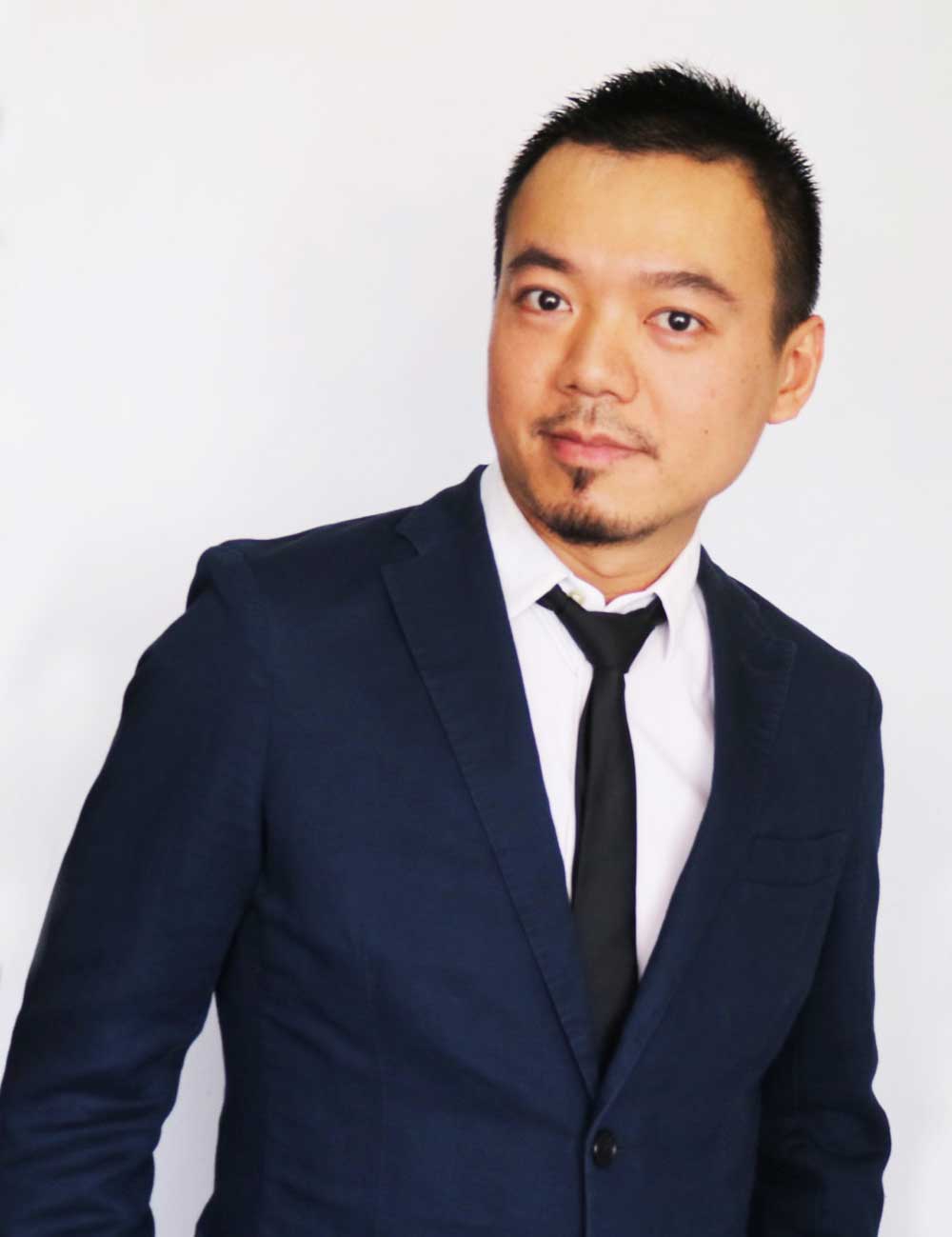
Irwan Soetikno
Senior Executive Urban Designer
SJ Urban Planning & Design
Singapore
Senior Executive Urban Designer
SJ Urban Planning & Design
Singapore
We should always question ourselves: Why do we build what we build? How will our projects impact people and the environment?
- Parinya, B+H
Kenny: Has the meaning of “sustainability” changed since you were studying architecture?
Baihan: When I first heard about this word, all the talk at the time was about fancy PV panels and rain collection devices. As I learnt more about sustainability, I started to understand that there are much more to it. In building design, it is in every part of the building’s life. It includes design for efficient building form at the early design stage, having low embodied carbon materials during construction, the use of energy conservation and monitoring devices during building operations and consideration of how to recycle construction materials when a building is being demolished.
Parinya: Yes, it has changed. In today’s context, “sustainability” is no longer simply about building something to meet immediate needs. Sustainability calls for better optimisation of resources over the short- and long-term and an eye to create resilient solutions that can adapt and flex over time. Design needs to be contextually aware and the end result should be liveable by creating the best human experiences.
Irwan: No, for me, the meaning of the word has not changed significantly, but the method and tools have definitely changed. For example, I used to work with physical modelling and a heliodon for solar analysis. But now, this analysis can be done easily with computer simulation.
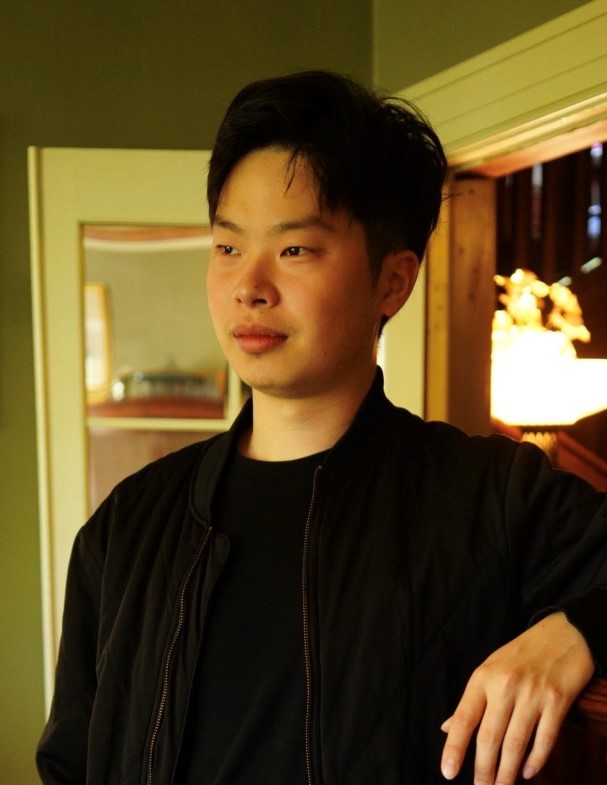
Guo Baihan
Building Science Engineer
Sino-Sun Architects and Engineers
Beijing, China
Building Science Engineer
Sino-Sun Architects and Engineers
Beijing, China
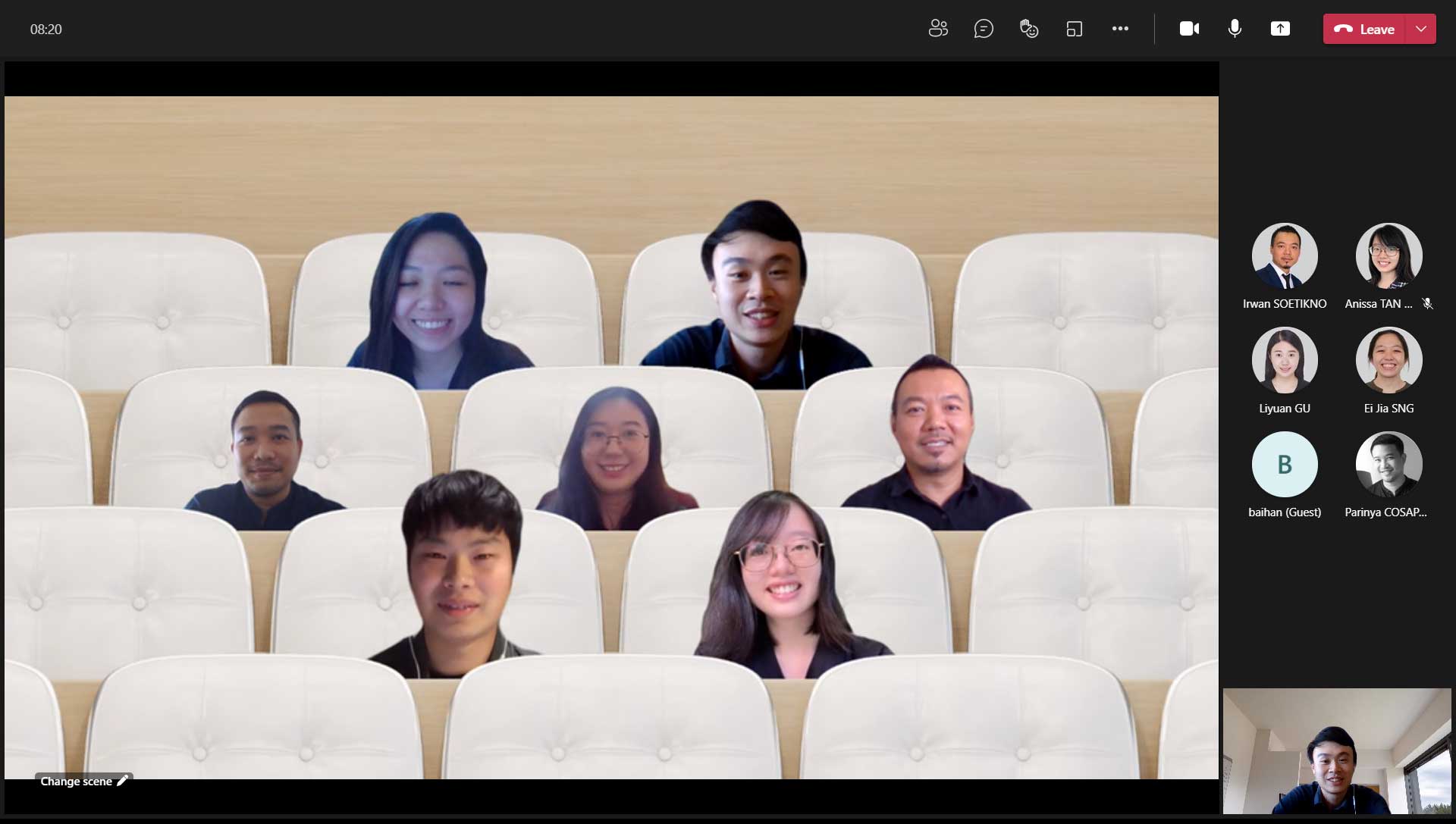
In the hot seat with Kenny over Zoom.
(From left to right)
Top Row – Ei Jia (SJ Township), Kenny (SJ architecture)
2nd Row – Parinya (B+H), Liyuan (SJ Landscape architecture), Irwan (SJ Urban Planning & Design)
3rd Row – Baihan (Sino-Sun), Anissa (SAA)
(From left to right)
Top Row – Ei Jia (SJ Township), Kenny (SJ architecture)
2nd Row – Parinya (B+H), Liyuan (SJ Landscape architecture), Irwan (SJ Urban Planning & Design)
3rd Row – Baihan (Sino-Sun), Anissa (SAA)
Kenny: Would you say that mankind has in fact become unsustainable in our acts towards achieving “sustainability”?
Anissa: Restraint would be a virtue, perhaps. In our industry, we tend to overprescribe solutions, doing more than we need to do. However, I suppose this year’s Pritzker Architecture Prize winners, Anne Lacaton and Jean-Philippe Vassal, whose rallying cry is to “never demolish, never remove, always add, transform and reuse”, is testament to our self-awareness of this tendency. Thus, we celebrate those who are able to exercise the kind of restraint we would all like to have.
Baihan: An example I can think of is the use of spray foam. Spray foam is a very good insulator and effective in creating a continuous air seal, thus conserving energy use. However, we have learnt that the blowing agent used in the spray foam has a huge equivalent embodied carbon which contributes to global warming. The good news is that people have acknowledged this issue and are consistently making spray foam better through adapting new technologies and regulatory guidelines or requirements. The key takeaway from this story is that it will always take a little bit of trial and error for us to move forward and I think mankind is still on the right track.
Irwan: Sustainability is in fact, a response and a counterbalance to the enormous consumption of energy and natural resources which impacts our environment throughout past decades of industrialisation, urbanisation and modernisation. Marxist thinkers such as Henri Lefebvre, Manuel Castell and David Harvey have pointed out that one of the critical underlying issues is due to our global economic system: neoliberal capitalism. It is an economic system that believes in sustained economic growth by employing several principles such as free-market competition with minimal state intervention in economic and social affairs and freedom of trade and capital.
Think about paper. We try to save the environment by reducing the use of paper. In most corporate practices, we go paperless and rely on the screen on our devices instead. But do you know that these digital devices consume rare-earth minerals? And the extraction of this mineral, as reported in some places like China, has caused environmental pollution and impacted the local villages.
Kenny: Labels, certifications and regulatory guidelines are amongst the little building blocks of sustainability in the building construction industry. What is your take on this?
Baihan: I think labels, certifications, regulatory guidelines and codes are the most important thing for us to move sustainable design forward. Right now, sustainability still comes at a premium. From the capital expenditure perspective, it may seem economically unwise to pay a premium. However, sustainable design will pay off in the long run if we have the necessary regulations, incentives and proper education to encourage more developers, designers and contractors to adopt sustainable design.
Irwan: I understand that the intent behind these practices is good which is to control the implementation of sustainability. The worst part is if all the players simply follow the rules to comply with the quantitative measures and are less attentive to the qualitative aspects. I believe the qualitative issues should be central to design practice.
Kenny: Designing in a post-pandemic world may thus accelerate us to rethink existing policies to bring across greater design flexibility for our architects to push the limits in integrated sustainable design. This can potentially range from sky terraces guidelines, gross floor area computations and even new material innovations which often require additional approvals from various authorities. A more rounded acceptance in our policies towards possible regulatory enhancements could thus be a leg-up towards achieving these motivated sustainability targets. What then do you hope to see, going forward?
Parinya: We are seeing growing awareness of environmental issues, especially among today’s younger generation. People all around the world have become more conscious of their thoughts and actions and I do want to see this positive self-consciousness lead to greater self-discipline in caring for the earth.
In terms of space design and creation, increasingly, people desire more access to nature in their daily lives and this has been reflected in the design of buildings and spaces where greenery is being added both vertically and horizontally. Such efforts will be much more amplified through innovative solutions when newer technologies are available in the future.
Ei Jia: I am positive about our future. We are becoming more aware of what we are lacking and what issues should be tackled first. For example, the pandemic showed that our infrastructure, particularly healthcare infrastructure needs to be more resilient. Various aspects of resilience should be explored from planning and designing to construction and operations.
Liyuan: With the arising awareness on environmental and ecological issues, I believe in the future we will live in a world that is greener than it is today. However, we might lose the original form of the natural landscape at the same time. As you can see from iconic architecture and landscape designs today, the forms have completely changed our understanding of a building or a green space.

Sng Ei Jia
Architectural Associate
SJ Township
Singapore
Architectural Associate
SJ Township
Singapore
Kenny: That’s a great point that climate change will impact our design - I think climate change will also change how we work. Architects need to leverage upon on big data to better understand user behaviours and translate them three-dimensionally into long-term design strategies to create healthier environments for the public. Surbana Jurong’s continued efforts in active institutional research and inter-disciplinary collaborations over the years to address urban issues across global cities put us in a good position to see this as an accelerated opportunity in crisis to tackle the challenges of climate change in a post-pandemic world. HOW DO YOU THINK CLIMATE CHANGE AFFECT THE WAY WE WORK AS ARCHITECTS?
Anissa: Definitely and it already has. Most clients today expect that the solutions we propose include the tackling of climate change issues. Thus, we see how some architects have pivoted to focus entirely on ESD or how at some point or other architects will work closely with other consultants in this aspect. Addressing climate change issues is a skillset we’d be required to have.
Covid-19 has catalysed changes in the mainstream workplace that were already enabled by technology and prompted by climate change.
Baihan: Yes, architects have the added responsibility to educate clients, policymakers, contractors about the future climatic challenges we face, what actions to take and what we can do to help. While we may incorporate sustainability in every aspect of our brilliant designs and sophisticated technologies, if people choose to not use them, it is as good as nothing.
Covid-19 has catalysed changes in the mainstream workplace that were already enabled by technology and prompted by climate change.
- Anissa, SAA
Kenny: Who or what inspires you? Are there people you look up to in your profession or as youth icons?
Liyuan: The works and theories of Piet Oudolf have enlightened me. He is famous for naturalistic design. Although the landscape, as a discipline, is always dealing with nature, Oudolf’s work delivers a strong message through the plants, and encourages all visitors or audiences to slow down or stop to admire the change of seasons, the succession of plans, and the beauty of nature.
Parinya: From an architectural perspective, I like the ideas of Professor Kengo Kuma who uses the principle of bringing out the hidden beauty in various natural materials to merge with nature and traditional architecture which is a critical aspect of sustainable design.
Kenny: As we move towards living with Covid-19, design needs to be looked at within a broader context. Covid-19 lays bare the dynamic fragility of our built environment and its need for maximum flexibility and customisation. Architects need to embrace cross-sectoral collaborations and weave together inter-disciplinary thinking to realise our design innovations.
At Surbana Jurong, our architects are able to leverage on the knowledge and expertise from our full suite of in-house specialist consultancy firms. How do you think your Business Unit is contributing to the global efforts on sustainability?
Irwan: On the project scale, our SJ Urban Planning & Design team goes through with our clients the “Identification and Evaluation on Environmental Aspects and Impacts” during project initiation/ kick-offs. This allows us to identify and address potential environmental impact by pursuing this development. As planners, we can then minimise them while providing relevant sustainable solutions that will benefit the client, stakeholders and people.
Anissa: The built environment sector is one of the largest contributors to climate change and global CO2 emissions. As a part of SAA’s design team, we have an important role to play at its very inception.
I think we recognise this and are thus always seeking to acquire new knowledge and push the quality of our designs, regardless of age and experience; our weekly design sharing is one such platform to drive change in the design we produce.
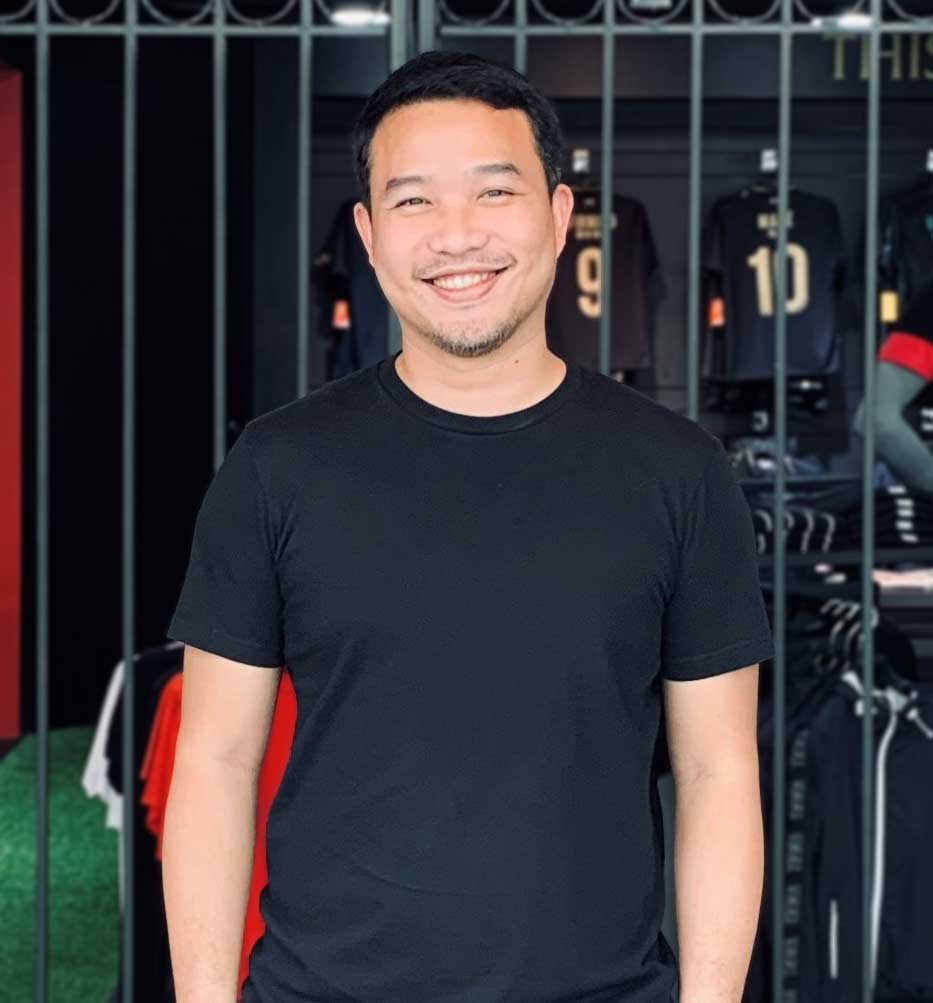
Parinya Cosapatarapim
Project Architect
B+H Architects
Singapore
Project Architect
B+H Architects
Singapore
Ei Jia: We at SJ Township have been consistent in achieving the goals and certifications set by the client for sustainability in the building construction industry. Additionally, being experts in the residential sector gives us the flexibility to adapt to changes quickly and effectively. An example would be designing the workers’ dormitories according to the new guidelines during the pandemic. Moreover, SJ Township’s expertise is applicable not just locally but also globally, where we helped to improve the housing in developing countries.
Baihan: Sino-Sun’s Building Science unit is at the forefront of building technology research. The research we do will help designers and contractors to make better informed decisions when it comes to building design and construction.
Parinya: B+H has been a strong advocate for sustainable design. It is one of the key principles that we have been championing, practising and committing to for many years. This year, we have joined the signatory to the World Green Building Council Net Zero Carbon Buildings Commitment where we advocate for all design work led by B+H globally to meet net zero carbon standards.
We have created multiple high-performing buildings with much lower energy consumption as compared to a typical building of the same type. We are also an advocate for the use of sustainable material such as mass timber that is lower in carbon footprint, easier to maintain, more durable and considerably cheaper than steel.
Liyuan: For our Landscape team, we are constantly learning and testing state-of-the-art approaches in our design and to create a more sustained and resilient landscape. We have also tried to cooperate with other specialists such as teams specialised in environmental engineering, water treatment, ABC Waters and etc. The ecological aspect of the landscape design has been a focus in our projects for long and already have many successful projects. For example, the Punggol Waterway project is one of the pioneer ABC Waters projects in Singapore. In recent years, our ecology-oriented design approaches have also achieved international recognitions, as demonstrated in projects such as the Baisha Riverfront Landscape Belt and Sanya Coastal Belt, Wetland & Riverfront Park in China.
Covid-19 lays bare the dynamic fragility of our built environment and its need for maximum flexibility and customisation. Architects need to embrace cross-sectoral collaborations and weave together inter-disciplinary thinking to realise our design innovations.
- Kenny, SJ architecture
Kenny: Reflecting upon each of your own experiences on this journey towards a sustainable future, what would you share with young architects out there?
Liyuan: The need to make the world more sustainable is urgent. As landscape architects, we are given the chance to protect and enhance the ecosystem and make it more resilient. We should equip ourselves with the latest approaches, findings, and knowledge to improve our design and strategy.
Baihan: Keep sustainability in mind in every aspect of our building design and educate the people around us about the future of our climate and what we can do to help; because what our future looks like really depend on what actions we take today.
Parinya: As designers, everything we design and build directly affects the environment. We should always question ourselves: “Why do we build what we build?” “How will our projects impact people and the environment?” What we do today will affect future generations and we are responsible for creating a better future.
Kenny: As we strive to make sustainability an “everyday problem” to address on our drawing boards and on the policy level in this endemic environment, I am confident that this will open up dynamic opportunities for architects to rethink typologies and dimensions of our future urban spaces, both underground and above ground, horizontally and vertically. Your very positive reflections are set to inspire our colleagues and stakeholders to do more to heal the earth.
It has been a great pleasure speaking to everyone here. Take care and stay safe!
The SEEDS Journal, started by the architectural teams across the Surbana Jurong Group in Feb 2021, is a platform
for sharing their perspectives on all things architectural. SEEDS epitomises the desire of the Surbana Jurong Group
to Enrich, Engage, Discover and Share ideas among the Group’s architects in 40 countries, covering North Asia, ASEAN,
Middle East, Australia and New Zealand, the Pacific region, the United States and Canada.
Articles at a glance




